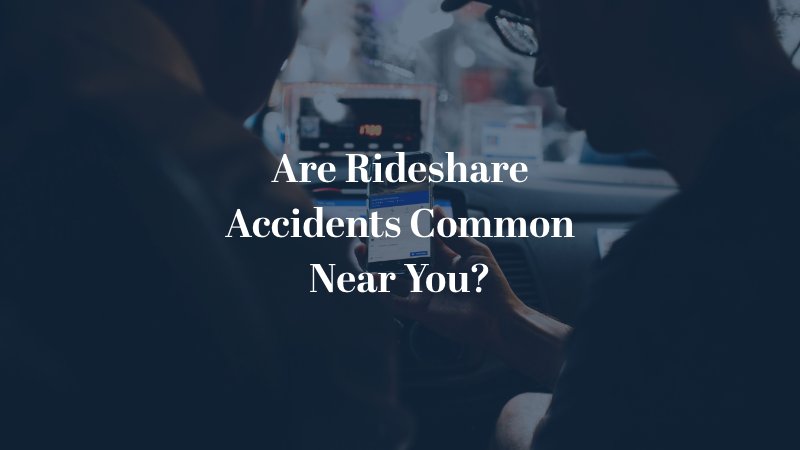It’s important to know that using rideshare services like Uber does carry certain risks, even if most trips are uneventful. While companies share some safety information, recent reports only go up to 2022 and don’t break accident numbers down by city or region.
This makes it hard for riders to know the true frequency of crashes or injuries where they live or travel. Many people assume these services are always safe, but accidents and incidents do happen – sometimes with serious consequences. Being aware of the risks can help you make informed choices and know what steps to take if you’re ever involved in a rideshare accident.
Common Causes of Rideshare Accidents
Rideshare drivers face the same dangers as everyone else on the road, but some risks are even greater because of how these services work. Here are some common reasons accidents happen when using a rideshare service:
- Distracted Driving: Rideshare drivers rely on apps for directions, communication, and tracking. These devices can take a driver’s eyes off the road, increasing the chance of missing hazards or reacting too slowly to sudden changes.
- Fatigue: Many rideshare drivers work long hours, sometimes juggling multiple jobs. Fatigue behind the wheel makes it harder to concentrate, delays reaction times, and raises the risk of drifting into another lane or nodding off.
- Unfamiliar Roads: Drivers may end up in parts of the city they don’t know well. Navigating new streets or confusing intersections can lead to sudden stops, missed turns, or unsafe maneuvers.
- Speeding and Aggressive Driving: The push to complete more rides quickly can cause drivers to speed, run red lights, or make risky lane changes. These aggressive behaviors are often a factor in crashes.
- Poor Vehicle Maintenance: Since rideshare drivers use their own cars, not every vehicle receives regular professional inspections. Worn brakes, bald tires, or broken lights can all contribute to accidents.
Each of these issues increases the risk to both riders and others on the road.

How to Prevent Rideshare Accidents
Everyone wants their Uber or Lyft trip to be as safe as possible. Here are ways both drivers and passengers can help prevent accidents:
Stay Focused on the Road
Drivers should limit distractions by setting up their route before the ride and using hands-free features. Riders can help by keeping talk or requests to a minimum when the car is moving.
Get Enough Rest
If you’re a driver, make sure you’re not behind the wheel when tired. Passengers can be alert to signs of fatigue, and suggest taking a break or ending the ride if the driver seems drowsy.
Learn the Area
Drivers can use map previews to get familiar with the destination before leaving. Knowing where busy streets, sharp turns, or tricky intersections are helps avoid last-minute moves and keeps everyone safer.
Keep the Car Maintained
Routine inspections and fixing small problems right reduce the odds of an accident. Passengers may want to look for signs of safe car care before the trip begins.
Drive Defensively and Follow Traffic Laws
All Uber or Lyft drivers should obey speed limits, signals, and lane rules, avoiding risky moves to save a few minutes. Passengers can remind drivers to go slow if they notice unsafe behavior.
Taking these steps gives both drivers and riders the best chance at staying safe every time they get in a rideshare vehicle. If you have any questions about rideshare accidents or you’ve been involved in one, our car accident lawyers can help. Contact Lightfoot Law, PLLC today to schedule a free consultation.